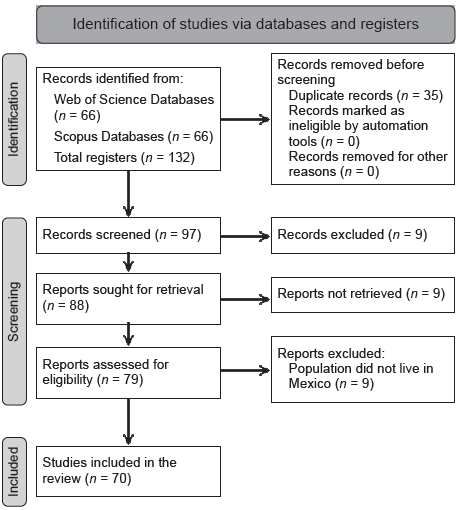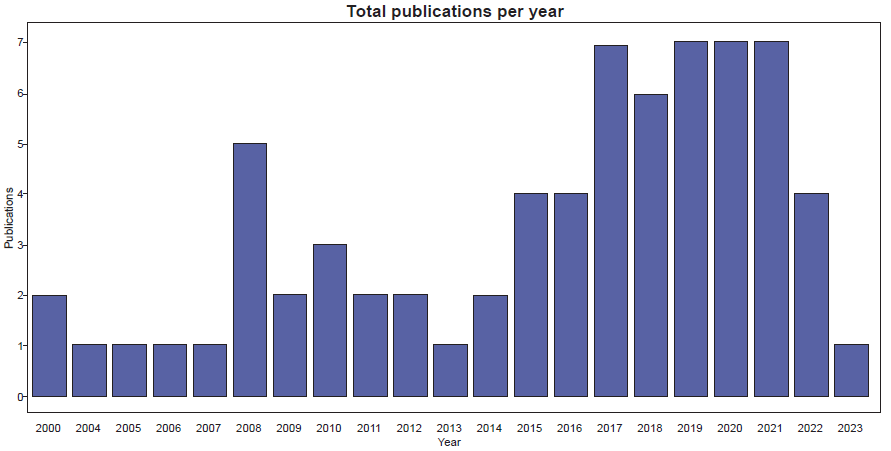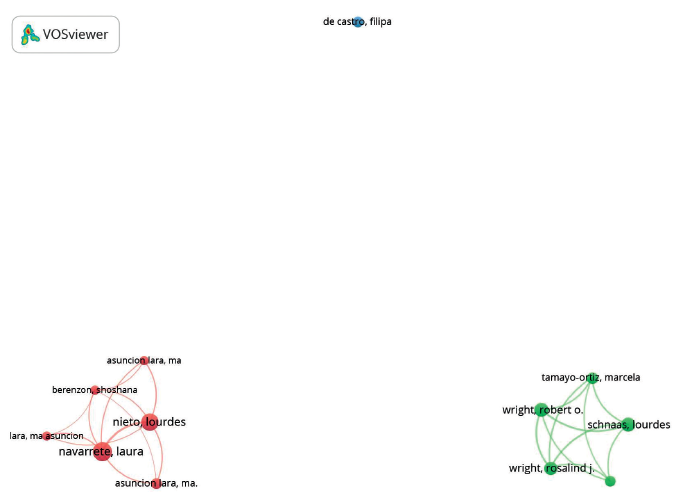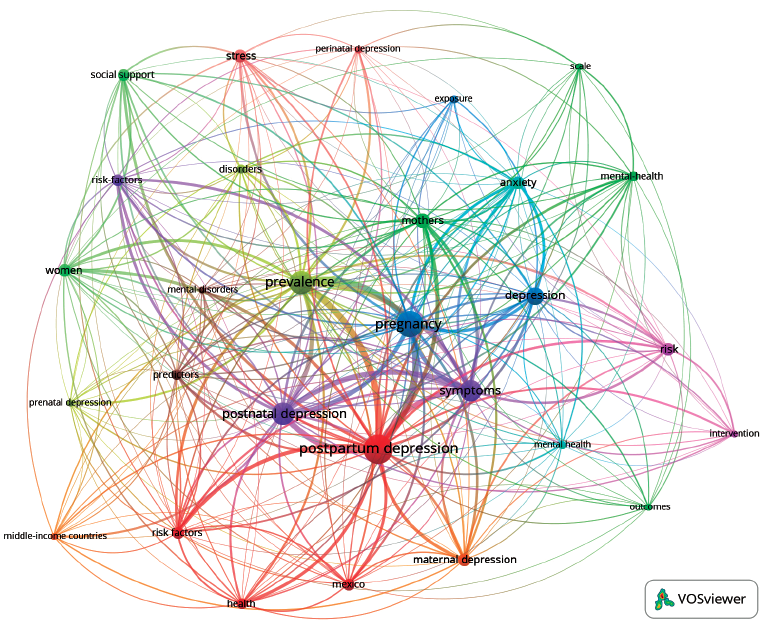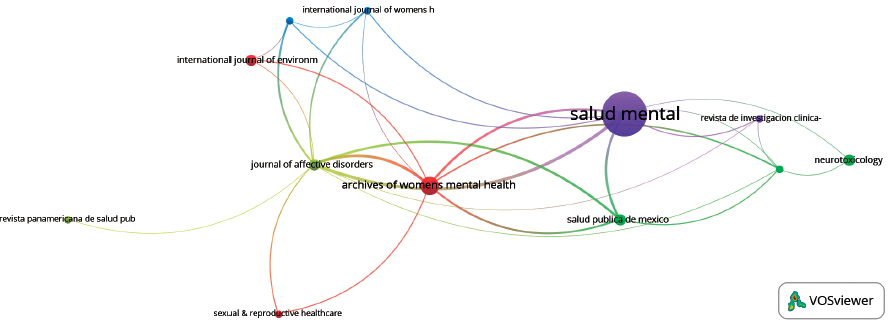BACKGROUND
Perinatal depression (PND) is a mood disorder at any stage during pregnancy or in the 4 weeks following delivery (About 50% of postpartum major depressive disorders begin prior to delivery; American Psychiatric Association, 2022). The symptoms of this disease can be associated with signs of depression, desperation, sadness, change in sleep and eating habits, decreased libido, irritability, diminished interest, isolation, thoughts of hurting oneself or the infant, or even suicidal thoughts (Galea & Frokjaer, 2019; Wang et al., 2021).
There are several proposed etiological mechanisms for postpartum depression, such as fluctuations in steroid hormones; neurobiological changes particularly in the hippocampus, prefrontal cortex, and amygdala (Brummelte & Galea, 2016). Little is known about genetic factors, but there has been some reported association between PND and serotonin transporter linked polymorphism, catechol-O.methyltransferase and brain-derived neurotrophic factor, oxytocin receptors, and estrogen receptors. However, their role is still unclear as they tend to show associations only during the second and third trimesters and for those who begin during the postpartum period (in particular, four weeks after delivery; Figueiredo et al., 2015; Lancaster et al., 2022; McEvoy et al., 2017; Mehta et al., 2021). It has also been proposed that the identification of genetic variants associated with risk for major depressive disorders that might be used as a polygenic risk approach to identify women at risk (Rantalainen et al., 2020).
Diverse psychosocial risk factors are associated with PND, such as life stress, lack of social support, family income, marital dissatisfaction, violence, child male gender family preference, unplanned pregnancy, previous psychopathology (the strongest predictor factor is prenatal depression), woman’s occupation, being afraid or delivery, gestational diabetes, age ≥ 40 years, hospitalization during pregnancy woman’s education level, and breastfeeding (Contreras-Carreto et al., 2022; Hutchens & Kearney, 2020; Shidhaye & Giri, 2014).
At least 10-30% of women experience this underdiagnosed complication that is more common in low-middle-income countries such as Mexico, where the prevalence is estimated at 13.9-30.7% (Contreras-Carreto et al., 2022; Santiago et al., 2023). The puerperium is the stage with the most prevalence of this disorder (60-80%; Brummelte & Galea, 2016; Krauskopf & Valenzuela, 2020; Wisner et al., 2013). Despite the availability of screening tools for detecting antenatal, the prevailing social stigma around mental health discourages women from seeking help and active treatment, leaving up to 60% without a clinical diagnosis. Among those diagnosed, less than 50% receive adequate treatment. It is reported that 25% of untreated women will develop a chronic illness, and 15% of those who do not treat their depression will attempt suicide (Bonari et al., 2004).
PND has been associated with poor birth outcomes such as low birth weight, preterm labor, preeclampsia, admission to Neonatal Intensive Care Unit, pregnancy outcome (stillborn vs. live birth), spontaneous abortion, long hospital stays, higher risk for cesarean section or vaginal instrumental, and lower Apgar scores (Dowse et al., 2020). Concerning the mother, it is associated with higher rates of substance use, poor attendance to antenatal clinics, more pain during labor and, therefore, a more frequent need for epidural analgesia (Bonari et al., 2004). It is also associated with reduced maternal care, such as more negative and disengaged behaviors toward children, fewer interactions with consequent delays in children’s neurobiological development, infant undernutrition, and early cessation of breastfeeding (Brummelte & Galea, 2016; Rahman et al., 2016).
The above makes indispensable the constant training and actualization of the health care personnel of the first level and obstetric to identify the risk factors in early stages from preconception to prenatal (Santiago et al., 2023). However, most primary care personnel are unaware of this public health problem that needs to be considered by policymakers and directors of the centers (Navarrete et al., 2022). The estimated costs of PND are between 32300 and 94000 USD, with the higher expenditures due to reduced economic productivity, more preterm births, and increased health expenses. However, the impact is not limited to the perinatal period; it impacts even in the adulthood of children with total lifetime costs of up to 4.86 billion USD (Bauer et al., 2014; Bonari et al., 2004; Dowse et al., 2020; Luca et al., 2020). These data suggest an urgent need and cost-effectiveness for prevention, diagnostic, and treatment approaches (Bauer et al., 2022).
Bibliometric analysis is a helpful tool that allows us to know and predict the trends (past, present and future) in the research of a specific field using diverse bibliometric indicators such as authors, citations, co-citations, institutions, or words shared between articles to construct networks of publications through time (Nakagawa et al., 2019). The above allows researchers to obtain a more detailed framework to identify gaps in the topic that interests them and establish whether it made substantial contributions (Gan et al., 2022; Manoj Kumar et al., 2022). The utility of bibliometrics is not limited to the scientific field but also represents a bridge between researchers and policy decision-makers, government, and the health system (Kajikawa, 2022). In the last one, the decisions should consider diverse stakeholders such as the patients, their families, health care workers, and associations (Bowen & Zwi, 2005; Elwyn et al., 2015).
As far as we know, only one bibliometric analysis has been made on the topic (Dol et al., 2023), while just one previous bibliometric analysis on antenatal depression was found (Zhu et al., 2023); two other were identified on postpartum depression: the first one from 2000 to 2020 (Bai et al., 2021) and the second one over a period of five years from 2017 to 2021 Wang & Shan, 2022), finally one on perinatal mental health also was identified (Ali et al., 2022). However, all of them only used one database. More important the academic panorama of the current scientific production in Mexico of the PND is unknown since no research has been made about this topic; we aimed to analyze the scientific production concerning the PND and provide a comprehensive reference for further research in Mexico through bibliometric indicators.
METHOD
Databases
The databases Scopus (Elsevier) and Web of Science (WoS; Clarivate Analytics) were employed as sources of the bibliographic data on the topic selected since it is widely accepted that numerous papers in the field of medicine can be retrieved using them (Ellegaard & Wallin, 2015). Access to the databases was provided by the National Autonomous University of Mexico. The searches were made in July 2023, we considered all the years of publication until 2023.
Search strategy
The search string was optimized with a previous search performed on the WoS database. The terms to refer to the pregnancy were combined with the word depression and Mexico until the best performance was achieved by the first and fourth authors. The following search string considering the topic was employed in WoS: (postpartum OR postnatal OR puerperal OR perinatal depression OR peripartum OR maternal OR pregnancy) AND (depression) AND (mexico). In the case of scopus the search string was: TITLE-ABS-KEY (postpartum OR postnatal OR puerperal OR perinatal AND depression OR peripartum OR maternal OR pregnancy) AND (depression) AND (mexico). The search was limited to articles to ensure a peer review process in the information obtained. Only English terms were included in the searches and from the returned documents.
Inclusion criteria
We included original articles related to the PND in Mexico retrieved in WoS and Scopus. We excluded pre-proofs, book chapters, meeting abstracts, conference presentations. The search was performed following the flow diagram established by the PRISMA statements for systematic reviews (Page et al., 2021). In the first stage, the articles were retrieved by searching in the Scopus and WoS databases with the optimized search strings (screening included title, abstract and keywords). The second stage consisted of a complete reading of the title and abstract. In the third stage the full text was read to ensure the locality of the population studied and the diagnosis of PND all of this was made manually by the first and second authors both of them work at a specialized mental health center.
Bibliometric analysis
Data from WoS was exported to Microsoft Excel and plain text to obtain the full record of bibliometric indicators for each paper by the first, third, and fourth authors. The documents generated included annual growth of publications, types of documents, languages, countries, authors, institutions, journals, citations, and funding agencies. The retrieved data was used in the free access VOSviewer program to create network visualization maps. These maps identify the strength of associations between authors, publications, their citations, keywords, institutions, and journals. The strength of the clusters was presented as Total Link Strength which is automatically given by VOSviewer upon mapping research data. The strength of the link is represented by a line, where thicker lines indicate a stronger link.
Results
The search query retrieved 132 documents on perinatal depression in Mexico- related literature of which we only used 70 articles after eliminating duplicates, added unrecovered documents in the search string, and determining that they corresponded to the theme selected for the synthesis (Figure 1).
Output and temporal publication and trends
The annual growth of publications in the PND in Mexico-related literature was low in the 2000 to 2014 period (except in 2008) but showed a step increase after 2015 (Figure 2). In recent years there has been a decrease in the study of this subject (the number of publications for the year 2023 may be underestimated due to the month in which the mapping was carried out), most of these papers are published at the journal “Salud mental” and “Archives of women’s health” (eFigure 1 in Supplement 1).
Analysis of leading institutions
and collaboration between countries
The six institutions who that had the greatest number of publications in the area were: National Institute of Perinatology (Mexico City, Mexico), Ramón de la Fuente Muñiz National Institute of Psychiatry (Mexico City, Mexico), and National Institute of Public Health of Mexico (Morelos, Mexico), these three institutes belong to a network of public institutions whose main objectives are to conduct scientific research and to train qualified personnel to conduct these investigations and also to act as healthcare professionals on their respective fields; it should be noted the other three were from the United States: George Washington University (Washington D.C., USA), Ball State University (Indiana, USA), and the Icahn School of Medicine at Mount Sinai (New York, USA; Figure 3); the countries who tend to collaborate more are Mexico and USA, however there exists collaboration with Spain and England (eFigure 2 in Supplement 1).
Analysis of authors and co-citation
The two authors with the most work in the area were Navarrete L., and Asunción Lara M. (Figure 4), within these authors, collaborations have been established with other researchers such as Nieto L., and Berenzon S.; all of them being part of a first collaboration group localized in Mexico. The second group in turn is characterized by Wright R., Schnaas L., Tellez R., and Tamayo-Ortiz M.; all of them located at the United States, with low collaboration between this groups, that is not visualized through the bibliometric mapping, when co-citation is considered this two groups are still well differentiated, but links between them are noticeable (eFigure 3 in Supplement 1).
Analysis of keywords
Mapping the most frequent terms in title/abstract fields of documents in the PND in Mexico-related literature gave 29 terms distributed in four clusters representing the main research themes (Figure 5). The first cluster (red) included keywords related to PND: risk factors, Mexico, health, stress, maternal depression, and PND predictors. The second cluster (blue and purple) included terms related to pregnancy: depression, mental health, anxiety, exposure, women risk, mental disorder, predictors, mental disorders, intervention, and risk factors. The third cluster (purple) included words that alluded PND and symptoms: risk, mental disorder, predictors, mental disorders, intervention, and risk factors. The fourth cluster (green) included terms related to: mothers, mental health, scale, outcomes, disorders, social support, and prenatal depression.
DISCUSSION AND CONCLUSION
This study aimed to analyze the scientific production through bibliometric indicators in the PND and provide a comprehensive reference for further research in Mexico. According to the Health and Nutrition National Survey (ENSANUT), from 2018 to 2019, 17.9% of the population met the criteria for moderate to severe depression being more common in women (1.8 times) and 19.9% more common in the urban areas of Mexico (Shamah-Levy et al., 2020). The numbers increase if it is considered PND, a mood disorder developed at any stage during the pregnancy and postpartum period (twelve months after delivery; Bennett et al., 2004). The symptoms of this disease are desperation, sadness, change in sleep and eating habits, decreased libido, irritability, diminished interest, isolation, thoughts of hurting oneself or the infant, or even suicidal thoughts (Galea & Frokjaer, 2019; Wang et al., 2021).
PND is a common and severe mental health problem associated with several consequences for the number of publications in Mexico from 2000 to 2014. The annual growth of publications was low and increased after 2015; however, since 2022, the number of publications has decreased, which could be partly explained by a reduction in Gross domestic Expenditure in Research and experimental Development (GERD) passing from 5.80 billion USD in 2011 to 4.06 billion USD in 2022. The latter being the lowest in the last ten years, with government investment being the most important source of income: 76.7% of the investment came from government funds, 18.2% from private funds and, 5.1 from others (higher education institutions and non-profit organizations), but also the one with the most notable decrease (CONACYT, 2021). All of these might be explained in part by a new development model with a focus on social programmes and a gradual reduction to the sectoral funds programme; for example, in 2019 and 2020, the Humanities Sciences and Technologies National Council (CONAHCYT) did not issue any calls for project proposals meaning that only projects that received funding in previous years remain operational; due the reduction in GDP, funding by shift to social programs and COVID-19 response impact on projects (CONACYT, 2021; Schneegans et al., 2021). Another possible explanation could be that while institutions or universities conduct research on PND, they might not publish in indexed journals. It requires researchers to increase their presence in these journals and keep in mind the gray literature to encompass more relevant studies and present a comprehensive view of evidence. However, there’s limited information on search methods (Mahood et al., 2014).
According to the analysis of publishing institutions, only three of the six institutions with the most publications in the area were from Mexico. The other resides in the United States, which might reflect the fact that there is a lack of perinatal mental health research (particularly in low- and middle-income countries such as Mexico) and policies (Dol et al., 2023). We believe the reason is the higher priority given to preventing pregnancy-related deaths (Fisher et al., 2012). In addition, the three most important research institutions on PND reside in Mexico City, where the majority of human resources in science and technology are centralized (CONACYT, 2021). In Mexico, 34.26% of the economically active population works in research and development (R&D), with Mexico City hosting the highest proportion of economically active individuals participating in R&D activities (55%; CONACYT, 2021; Schneegans et al., 2021). Research topics and publication numbers often mirror a country’s awareness of prevalent issues. Therefore, it’s reasonable to find that healthcare personnel are attentive to or prepared to detect and treat PND (Navarrete et al., 2022). Mexico and the United States demonstrate a predominant tendency for collaboration, possibly attributed to their geographical proximity, Nonetheless, it is imperative to capitalize on these collaborative efforts to optimize the utilization of available resources.
The two most prolific authors in this field were Navarrete L., and Asunción Lara M. They often collaborate, being part of the same institution alongside Nieto L., and Berenzon S. Notably, their collaboration is limited with the group from the USA, represented by Wright R., Schnaas L., Tellez R., and Tamayo-Ortiz M. Enhancing collaboration among authors and institutions is crucial for fortifying resources and optimizing efforts toward a better understanding of PND in Mexico. The absence of new researcher groups persists despite a substantial rise in the pool of R&D human resources (from 11.2 million in 2016 to 18.5 million in 2020; CONACYT, 2021), with many of them possibly unemployed or involved in non-R&D pursuits. There is a scarcity of jobs, with a minimal increase from 6.2 million in 2016 to 6.7 million in 2020 (CONACYT, 2021; Schneegans et al., 2021) accompanied by a lack of resources to tap into the potential of innovative minds. This situation risks a ‘brain drain’ phenomenon, impeding Mexico’s development (Arroyo & Castañeda, 2016).
The first cluster focused on identifying PND risk factors in Mexico. It’s crucial for policymakers and healthcare professionals to note that depression is more prevalent in urban settings. Despite various proposed neurobiological mechanisms, most risk factors point to psychosocial factors (Contreras-Carreto et al., 2022; Hutchens & Kearney, 2020; Shidhaye & Giri, 2014), meaning the need for research and policies to address these social determinants of health. Doing so can mitigate disparities in health outcomes, making them viable targets for policy interventions (WHO, n.d.).
The second research cluster focused on predictors, interventions, and related risk factors. Maternal and child care standards include PND, with recommendations at first and second-level health facilities to consult a mental health professional. However, the Edinburgh Postnatal Depression Scale (EPDS), validated in Mexico, indicates a total score of > 10 points as depressive illness risk (75% sensitivity and 93% specificity). Upon identification, women must submit to diagnoses and begin psychoeducation and psychotherapy (such as cognitive-behavioral or interpersonal therapy). If deemed insufficient, it suggests a pharmacological approach (Curry et al., 2019; Genchi-Gallardo et al., 2021; Secretaría de Salud, 2021; Santiago et al., 2023; SSA, 2016).
The third group emphasizes birth outcomes and social support. Acknowledging that PND heightens the risk of adverse maternal and infant outcomes beyond the perinatal period, these repercussions span beyond mortality, impacting society significantly (Bauer et al., 2014; Bonari et al., 2004; Dowse et al., 2020; Luca et al., 2020). The inherent bias within published literature introduces complexity in assessing their genuine influence, given that the volume of articles does not consistently correspond to their dissemination. This discrepancy may lead to an underestimation of the impact associated with PND.
The scarcity of studies on the neurobiology of PND highlights the field’s potential for development in Mexico. Despite an 11% increase in publications within “Psychiatry and Psychology” since 2019, these contributions represent merely 1.44% of Mexico’s overall scholarly output. These call on government, universities, and society to be more aware of mental health and the importance of research and policy (CONACYT, 2021), and particularly in the PND, it may be due to inadequate collaboration between health institutes.
Our study marks the first bibliometric analysis of PND scientific production in Mexico, conducting a comprehensive survey for quantitative and qualitative analysis of publications. However, limitations include a relatively small article count and the potential underestimation of 2023 publications due to the timing of data compilation. The exclusive reliance on WoS and Scopus led to the omission of ‘gray literature,’ potentially excluding publications from academic institutions and certain hospitals, thereby introducing a bias into the analysis. Future research should consider exploring this unaccounted literature for more comprehensive insights.











 text new page (beta)
text new page (beta)


